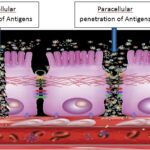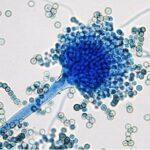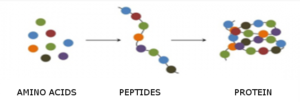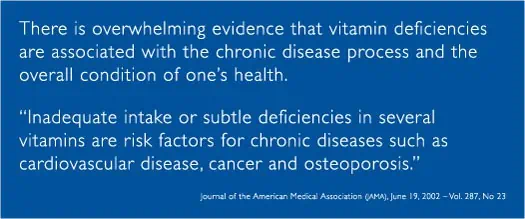
Gluten causes inflammation in the gut, which can eventually lead to intestinal permeability, or “leaky gut.” Leaky gut allows undigested food particles, bacteria, and other pathogens to escape into the bloodstream where they can trigger allergies, sensitivities, and inflammation in other parts of the body. This test pinpoints which of these is causing leaky gut so your practitioner knows what to specifically target for faster and more efficient gut repair.
We evaluate:
- Actomyosin IgA Lipopolysaccharides (LPS) IgG
- Occludin/Zonulin IgG Lipopolysaccharides (LPS) IgA
- Occludin/Zonulin IgA Lipopolysaccharides (LPS) IgM
- Occludin/Zonulin IgM
Array 2 is an antibody assessment of the intestinal barrier integrity and bacterial endotoxins (lipopolysaccharides), tight-junction proteins (occludin, zonulin) and cell cytoskeleton (actomyosin) and identifies both transcellular (through the cells) and paracellular (between the cells) routes of intestinal barrier penetration (leaky gut) by large molecules with a capacity to challenge the immune system.
Gluten causes inflammation in the gut, which can eventually lead to intestinal permeability, or “leaky gut.” Leaky gut allows undigested food particles, bacteria, and other pathogens to escape into the bloodstream where they can trigger allergies, sensitivities, and inflammation in other parts of the body. This is a main reason why people come back sensitive to many foods. Several different mechanisms cause leaky gut:
- Breakdown of cells
- Loosening of the junctures of the gut lining
- Bacterial, Viral or Parasite infection
This test pinpoints which of these is causing leaky gut so your practitioner knows what to specifically target for faster and more efficient gut repair. Price: $295.00
Paracellular penetration of Antigens
Transcellular penetration of Antigens
TRANSCELLULAR & PARACELLULAR ROUTES OF INTESTINAL BARRIER PENETRATION:
 Cyrex Array 3: Wheat/Gluten Proteome Sensitivity and Autoimmunity
Cyrex Array 3: Wheat/Gluten Proteome Sensitivity and Autoimmunity
More than one wheat protein can cause Gluten Sensitivity – Cyrex Labs tests for multiple peptides of gluten
Being Gluten Sensitive isn’t as black-and-white as once thought. Actually, gluten is a misnomer – “gliadin” is the portion of wheat that triggers an immune response in people (since “gluten” is commonly used I will stick with that term). It also has been discovered that wheat is made up of more than 100 different components that can cause a reaction, not just one (gliadin).
Array # 3 test for the following:
Wheat IgG Wheat IgA Wheat Germ Agglutinin IgG
Wheat Germ Agglutinin IgA Native + Deamidated Alpha-Gliadin-33-mer IgG
Native + Deamidated Alpha-Gliadin-33-mer IgA Alpha-Gliadin-17-mer IgG
Alpha-Gliadin-17-mer IgA Gamma-Gliadin-15-mer IgG Gamma-Gliadin-15-mer IgA
Omega-Gliadin-17-mer IgG Omega-Gliadin-17-mer IgA Glutenin-21-mer IgG
Glutenin-21-mer IgA Gluteomorphin+Prodynorphin IgG Gluteomorphin+Prodynorphin IgA
Gliadin-Transglutaminase IgG Gliadin-Transglutaminase IgA Transglutaminase-2 IgG
Transglutaminase-2 IgA Transglutaminase-3 IgG Transglutaminase-3 IgA
Transglutaminase-6 IgG Transglutaminase-6 IgA
Being Gluten Sensitive isn’t as black-and-white as once thought. Actually, gluten is a misnomer – “gliadin” is the portion of wheat that triggers an immune response in people (since “gluten” is commonly used I will stick with that term). It also has been discovered that wheat is made up of more than 100 different components that can cause a reaction, not just one (gliadin).
Until now testing for Gluten Sensitivity has only been against one of those components, alpha gliadin. Through extensive research Cyrex pinpointed the twelve components of wheat that most often provoke an immune response.
This new test greatly expands the parameters of gluten sensitivity testing, catching those who may have previously tested negative because they don’t react to the alpha gliadin. A ‘false negative’ occurs when the test results says a condition is not present, when in reality there is a problem. Many forms of standard testing for celiac disease or gluten sensitivity do not include the right markers or enough of the right markers. Using Cyrex Array 3 allows for more accurate results with fewer ‘false negatives’.
The test is recommended for individuals who have:
- Non-responsive intestinal complaints including irritable bowel syndrome and colitis
- Chronic, multiple system complaints, including chronic fatigue syndrome and fibromyalgia
- Depression, any type of auto-immunity, neurological conditions including ADHD and Parkinson’s
- Chronic anemia and skin conditions such as rosacea, eczema and psoriasis and canker sores
- Headaches and migraines, and hormonal problems including infertility and PMS
- other illusive complaints and conditions for which no answers are given
Opioid testing
Array 3 screens for antibodies to the opioids produced from wheat called Gluteomorphins and Prodynorphins. Gluten can have a drug-like opiate effect on an individual. Antibodies to gluteomorphin and prodynorphin can indicate that gluten is affecting your brain. Some people have enzymes in their digestive tract that break gluten down into opioids that act like heroin or morphine. Embarking on a gluten-free diet can cause terrible withdrawal symptoms in these people. One practitioner tells of a patient whose withdrawal symptoms were so severe she went to the emergency room.
Another problem with opioids is they disrupt brain function by attaching to receptor sites normally meant for neurotransmitters. Neurotransmitters are brain chemicals that help dictate our personality, moods, behavior, bodily function, and more.
This opioid effect on neurotransmitter receptors explains why gluten plays a role in so many cases of ADD/ADHD, autism, or behavioral problems in children; or brain fog, depression, anxiety, schizophrenia, anorexia and migraines in adults. When one mother put her autistic son on a gluten-free diet, he began eating the binding out of books as he was so desperate for his gluten-opioid “fix.”
Lectins
Array 3 also includes testing for antibodies to the wheat lectin Wheat Germ Agglutinin (WGA). WGAs are lectins or carbohydrate-binding proteins with a capacity to bind to many cells and tissue antigens. Lectins can bind to cells involved in the immune system and induce toxic damage, inflammation and autoimmunity.
Enzymes
Array 3 includes testing for antibodies to enzymes: Tissue Transglutaminases -2, -3 and -6 and Gliadin-Tranglutaminase Complex. Transglutaminases are a family of enzymes that form protein polymers, like scaffolding, which are vital in the formation of barriers and stable structures such as gut tissue. Antibodies may appear in serum before the clinical onset of symptoms.
Gliadin-Transglutaminase IgG can assist with diagnosing Celiac Disease.
Tissue Transglutaminase-2 (tTG2) is commonly recognized for being an effective diagnostic test for celiac disease. Transglutaminase is an enzyme in the digestive tract targeted in an autoimmune attack triggered by gluten. tTG2 antibodies indicate gluten is attacking gut tissue through an autoimmune attack.
Tissue Transglutaminase-3 (tTG3) is express mainly in the epidermis (skin disorders) and to a lesser extent in the placenta and the brain.
Tissue Transglutaminase-6 (tTG6) is expressed in neural tissue. tTG6 may be involved in the pathogenesis of gluten reactivity-related neurological dysfunction.
Price: $425.00
Cyrex Array 4: Gluten-Associated Sensitivity and Cross-Reactive Foods
In cross-reactivity, the body may mistake another food for gluten and react accordingly. Array 4 tests for 24 different foods that may be causing cross-reactivity or are newly introduced to the diet or over-consumed favorites.
One of the most frustrating scenarios for both the practitioner and the patient is when a gluten-free diet fails to have any effect on a person who seems so clearly gluten sensitive. Newer research shows this may be due to cross-reactivity. In cross-reactivity, the body mistakes another food for gluten and reacts accordingly. Array 4 tests for 24 different foods that may be causing cross-reactivity or are newly introduced to the diet or over-consumed favorites. Array #4 Tests for the following Foods:
- Rye, Barley, Spelt, Polish Wheat IgG + IgA Combined
- Cow’s Milk IgG + IgA Combined
- Alpha-Casein & Beta-Casein IgG + IgA Combined
- Casomorphin IgG + IgA Combined
- Milk Butyrophilin IgG + IgA Combined
- Whey Protein IgG + IgA Combined
- Chocolate (Milk) IgG + IgA Combined
- Oats IgG + IgA Combined
- Yeast IgG + IgA Combined
- Coffee IgG + IgA Combined
- Sesame IgG + IgA Combined
- Buckwheat IgG + IgA Combined
- Sorghum IgG + IgA Combined
- Millet IgG + IgA Combined
- Hemp IgG + IgA Combined
- Amaranth IgG + IgA Combined
- Quinoa IgG + IgA Combined
- Tapioca IgG + IgA Combined
- Teff IgG + IgA Combined
- Soy IgG + IgA Combined
- Egg IgG + IgA Combined
- Corn IgG + IgA Combined
- Rice IgG + IgA Combined
- Potato IgG + IgA Combined
One of the most frustrating scenarios for both the practitioner and the patient is when a gluten-free diet fails to have any effect on a person who seems so clearly gluten sensitive. Newer research shows this may be due to cross-reactivity. In cross-reactivity, the body mistakes another food for gluten and reacts accordingly. Array 4 tests for 24 different foods that may be causing cross-reactivity or are newly introduced to the diet or over-consumed favorites.
Dairy – Cross-reactivity is common with dairy as its structure so closely resembles that of gluten. In fact 50% of people who are sensitive to gluten are also sensitive to dairy. This panel has great clinical significance as it can explain why people still react even after giving up gluten and dairy. Price: $325.00
The test is recommended for individuals who:
- Have non-celiac Gluten sensitivity or celiac disease
- Are experiencing limited improvements or are non-responsive on a gluten-free diet
- Have gut dysbiosis, which appears to be resistant to standard therapy
- Suspect that other foods may be involved in causing them to feel unwell
- Were found to have significant “leaky gut” problems on the Array #2, Intestinal Antigenic Permeability Screen

Cyrex Array 5: Systemic Autoimmune Reactivity Screen
Which parts of the body are affected by a gluten-sensitivity?
People typically shrug off the possibility of gluten sensitivity by saying, “I don’t have any digestive problems.” Little do they know that gluten produces digestive symptoms in only a minority of people (1 out of 8). For the majority, gluten can damage other tissue or organs like the brain, the heart, the skin or the respiratory tract.
Array #5 tests for the following ongoing damage to the following tissues and organs:
- Parietal Cell + ATPase IgG + IgA Combined
- Intrinsic Factor IgG + IgA Combined
- ASCA + ANCA IgG + IgA Combined
- Tropomyosin IgG + IgA Combined
- Thyroglobulin IgG + IgA Combined
- Thyroid Peroxidase (TPO) IgG + IgA Combined
- 21 Hydroxylase (Adrenal Cortex) IgG + IgA Combined
- Myocardial Peptide IgG + IgA Combined
- Alpha-Myosin IgG + IgA Combined
- Phospholipid IgG + IgA Combined
- Platelet Glycoprotein IgG + IgA Combined
- Ovary/Testis* IgG + IgA Combined
- Fibulin IgG + IgA Combined
- Collagen Complex IgG + IgA Combined
- Arthritic Peptide IgG + IgA Combined
- Osteocyte IgG + IgA Combined
- Cytochrome P450 (Hepatocyte)
- IgG + IgA Combined
- Insulin + Islet Cell Antigen
- IgG + IgA Combined
- Glutamic Acid Decarboxylase 65 (GAD 65)
- IgG + IgA Combined
- Myelin Basic Protein IgG + IgA Combined
- Asialoganglioside IgG + IgA Combined
- Alpha + Beta Tubulin IgG + IgA Combined
- Cerebellar IgG + IgA Combined
- Synapsin IgG + IgA Combined
People typically shrug off the possibility of gluten sensitivity by saying, “I don’t have any digestive problems.” Little do they know that gluten produces digestive symptoms in only a minority of people (1 out of 8). For the majority, gluten can damage the brain, the heart, the skin, the respiratory tract or the joints.
Cyrex Array 5 can be useful for Patients who:
- Have been diagnosed with an autoimmune disorder, as they commonly develop additional autoimmune conditions
- With chronic increased intestinal permeability, which is the gateway for environmentally-induced autoimmune disorders
- Chronic increased intestinal permeability (Array #2), which is the gateway for environmentally-induced autoimmune disorders
The Cyrex Array 5 is an economical and effective way to assess possible tissue damage to multiple organs of the body and will help you assess predictive antibodies. Elevated numbers of antibodies, known as Predictive Antibodies, are measurable up to ten years before the clinical onset of the disease. Identification of pathogenesis at this stage allows for the possible arrest or even reversal of disease progression.
Array 5 – Systemic Autoimmune Reactivity Screen™ looks at multiple tissues commonly targeted by auto-antibodies, including heart, thyroid, joint, gut, brain, liver, thyroid, ovaries, bone and more. Price: $675.00
 Cyrex Array 3: Wheat/Gluten Proteome Sensitivity and Autoimmunity
Cyrex Array 3: Wheat/Gluten Proteome Sensitivity and Autoimmunity



